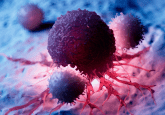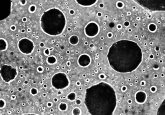Scientists move one step closer towards the early diagnosis of ovarian cancer

Researchers from the Institute of Medical Biology and the Bioinformatics Institute at A*STAR, based in Singapore, have made progress towards the early detection and personalized treatment of high-grade serous ovarian cancer (HG-SOC), currently one of the most poorly understood cancers, with a lack of biomarkers identified for clinical use.
The group conducted bioinformatics analyses of mutational and clinical data of 334 HG-SOC tumor samples from The Cancer Genome Atlas to identify novel tumor-driving mutations, survival-significant patient subgroups and tumor subtypes potentially driven by either hereditary or sporadic factors.
The team identified a sub-cluster of high-frequency mutations in 22 patients and 58 genes associated with DNA damage repair, apoptosis and cell cycle. Observed with the highest intensity were mutations of CHEK2, which the team found were associated with poor therapeutic response and overall survival of these patients.
The group reported that a 21-gene mutational prognostic signature significantly stratified patients into relatively low- or high-risk subgroups with an overall survival of 5 years. Further analysis of these genes and the high-risk subgroup revealed two distinct classes of tumors characterized by either germline mutations of genes such as CHEK2, RPS6KA2 and MLL4, or somatic mutations of other genes in the signature.
The research team, which was led by Vladimir A Kuznetsov, a scientist at A*STAR’s Bioinformatics Institute, anticipates that these results could assist in the prediction and clinical management of HG-SOC, personalized treatment and improved screening efforts towards the identification of women at high-risk of hereditary ovarian cancers distinct from those associated with BRCA1/2 mutations.
Source: Ow GS, Ivshina AV, Fuentes G, Kuznetsov VA. Identification of two poorly prognosed ovarian carcinoma subtypes associated with CHEK2 germ-line mutation and non-CHEK2 somatic mutation gene signatures. Cell Cycle 13(14), 2262–2280 (2014).





